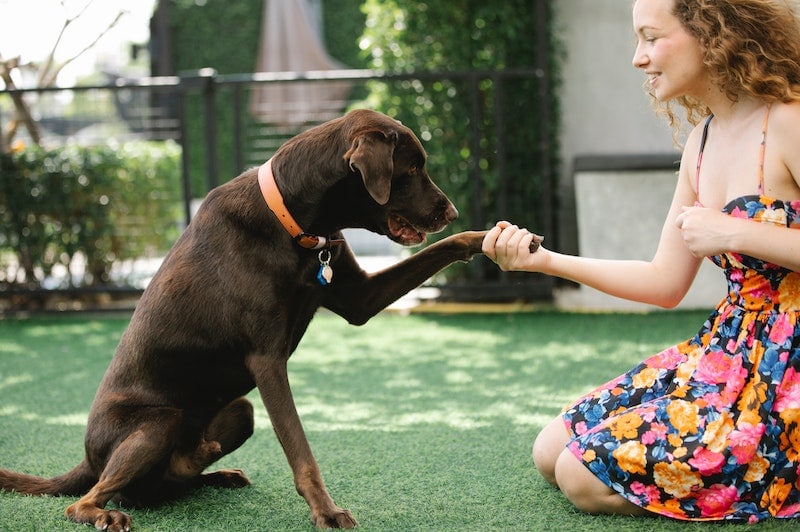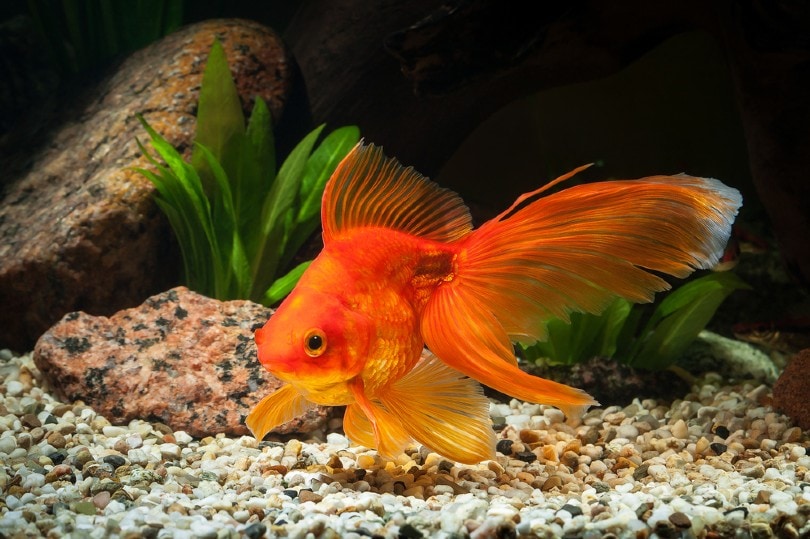VET APPROVED

The information is current and up-to-date in accordance with the latest veterinarian research.
Learn more »Not only is teaching your dog to shake hands a fun party trick you can impress friends with, but it’s also a way to teach them attention, encourage good behavior, and deepen your bond. This activity is perfect because your dog learns something, but they will enjoy it because they’re spending quality time with their favorite human. There are different methods to train this behavior, we will teach you step by step one of the easiest methods to do it.
Before you start, your dog will need to know “sit” before you can teach them to shake hands. If you’ve already done that, you can start training today!

The 8 Steps on How To Teach Your Dog To Shake
When you’re teaching this trick, make sure you have some high-value treats to use as rewards. Alternatively, if you’re using the clicker training method, that will also work. Pick an environment that is free from distractions, like your house when no one else is home or in different rooms.
1. Begin by Sitting
This is why it’s important that your dog already knows this command. Once they’re sitting, hold off giving them a treat because you don’t want them to think that’s the trick you’re trying to pull off.
2. Make Your Dog Aware of the Treat
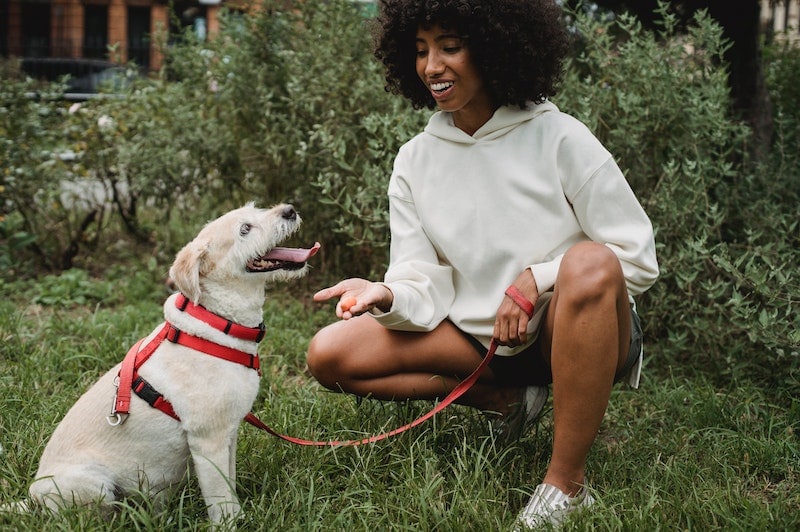
Place the treat into your hand, close it, and hold it out to your dog. Your dog will try and figure out what you want by licking and sniffing at your hand. The key here is to wait until they paw at your hand. Click or praise them, open your hand, and give them the treat.
3. Repeat
Repeat this interaction until your dog grows used to pawing at your hand instead of trying to lick or sniff at you first.
4. Raise the Difficulty
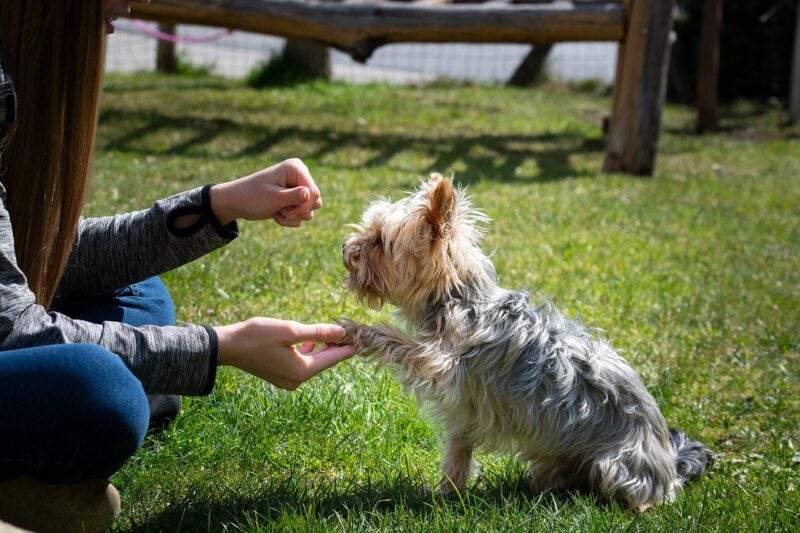
Once your dog is reliably pawing at your hand when you hold it out, increase the duration and difficulty. You’re still not adding verbal cues yet. You want to ensure your dog has this part down before adding signals. This avoids confusion, like accidentally teaching “paw” instead of shake.
Hold your dog’s paw slightly longer before you click or praise them and then give them the treat. This way, they know that holding your hand, not scratching, is the correct behavior.
5. Verbal Cue
“Shake” is the most common verbal cue, but you can use any word you like. Add it in when you hold out your hand, right before your dog’s paw touches you, then click or give them a treat and praise for a job well done. The timing here is very important. You want to ensure you speak right before your dog offers to shake, and when you’re confident, they will shake your hand.
6. Removal of Treats As a Motivator
Once your dog understands the shake command, you can start phasing out the use of the treat. Start by rewarding them with your other hand so they don’t expect a treat from the shaking hand. As they get used to this, offer the treat fewer and fewer times until you don’t have to use it at all. Still, it is always recommended to offer the sporadic and unexpected treat to your pup for every behavior they respond to here and there. This helps to ensure they will keep responding well and keep their attention and motivation high without having to give them a treat every time.
7. Switch Hands
Just because your dog knows how to shake with one paw doesn’t mean they’ll know how to do it with the other. If you want them to use both, you might need to start the training fresh with the new paw.
To avoid confusion, be consistent. One method people use is to shake the paw closest to your hand: your right hand, their left paw. If, for instance, you offer your dog your right hand and they present their right paw, don’t reward them. Only provide a treat when they give you the right foot. Pointing or gently touching their paw can also cue them to know what is expected of them at the beginning. You could also add a different verbal cue for each side.
8. Perfect the Trick
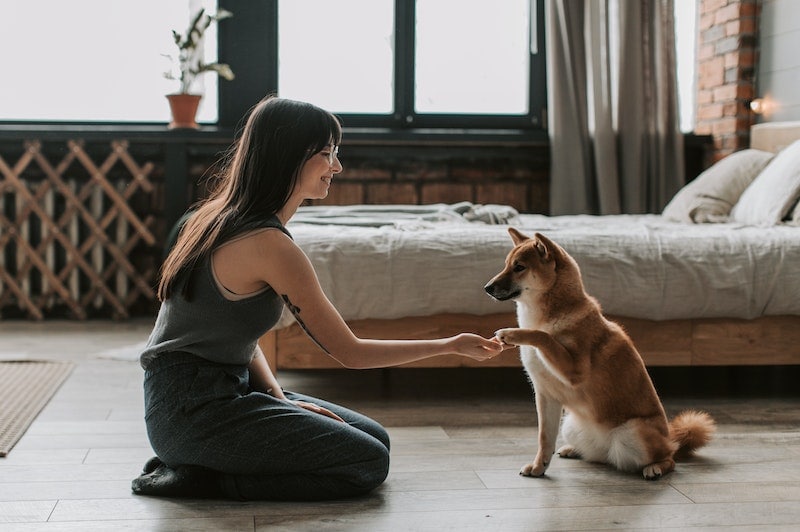
The perfect trick is only ideal if it can be performed anywhere. Be sure to venture out of your controlled environment to get your dog used to shaking in different places with different levels of distraction. Also, remember that a dog’s attention span is slightly shorter than ours. Spending 5-10 minutes together might not feel like long, but it’s the perfect amount of time for your dog. It also keeps the fun level up and ensures your dog is more likely to want to do it again.

Conclusion
We hope these steps have been helpful and have inspired you to try and teach your dog a new trick. It might require some patience on your part, especially if you’re going in to teach them to shake both paws, as they might get a little confused at first. But we have every faith in you both, and we’re sure you’ll both have fun while you’re at it!
- You might also like: How to Teach Your Dog the 5 Basic Commands: Expert Tips
Featured Image Credit: Blue Bird, Pexels
